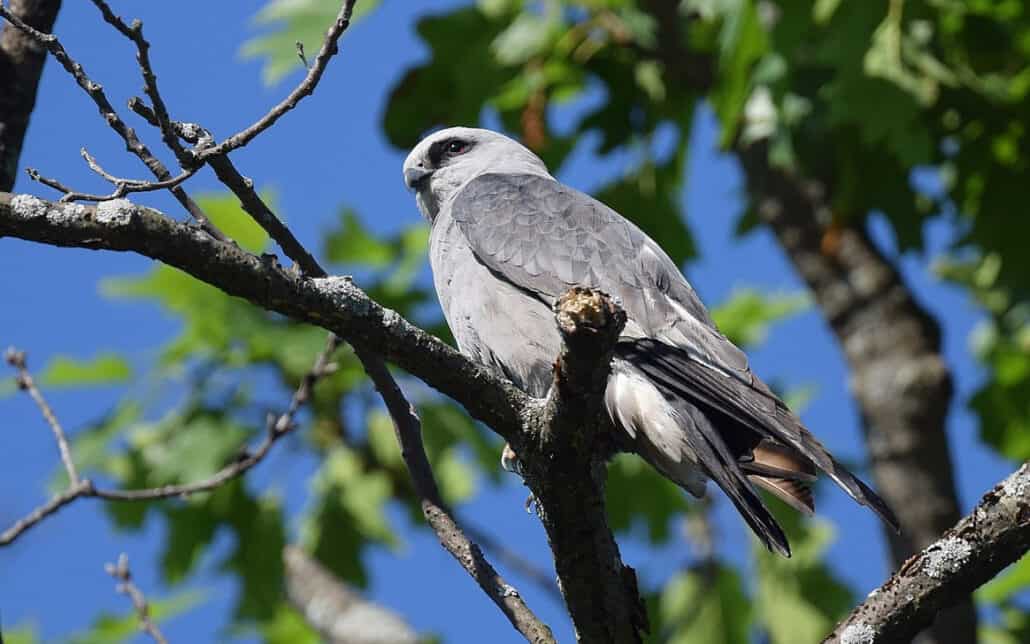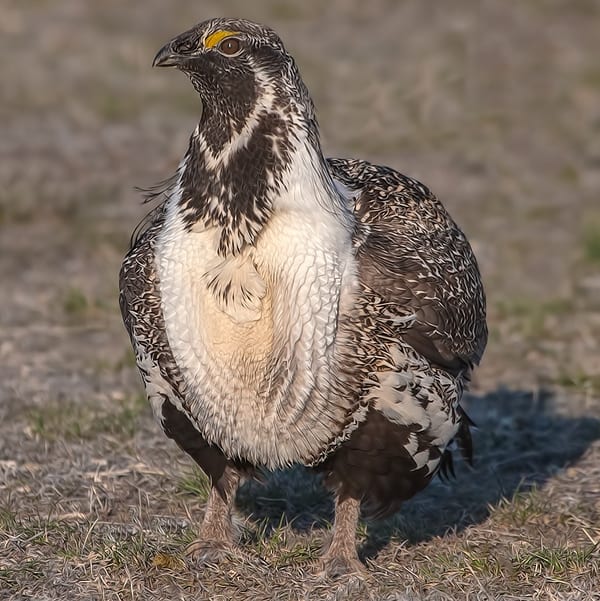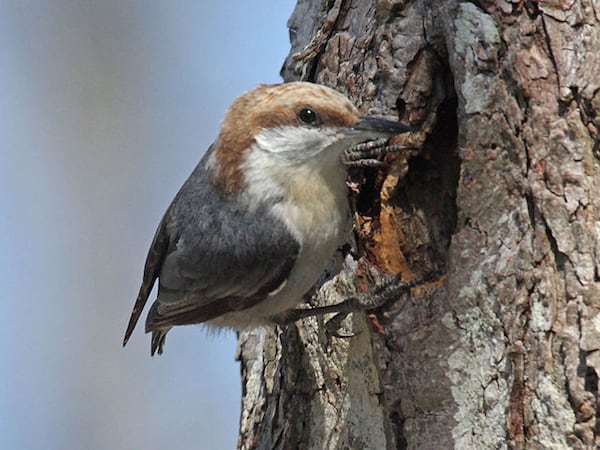Look for
The Mississippi kite is a small raptor with a lithe body, pointed wings, and a square tail. The adult Mississippi kite has primarily gray plumage, darker on its back and upperwings and a lighter shade on its head and secondary wing feathers. Its tail and the tips of its wings are black. It also has a small, hooked bill, dark red eyes, and yellow legs. The juvenile Mississippi kite is more tannish-gray with heavy brown streaking and white bands on its tail.
Listen for
The Mississippi kite’s call is a high-pitched, sharp whistle of two or three notes. The last note is held the longest and gradually slurs down in pitch: pee-teeer, similar to broad-winged hawk, but descending in pitch.
Find it
The Mississippi kite breeds primarily in the central and southern states, with highest concentrations in northern Texas and Oklahoma through southern Kansas, as well as along the Mississippi River. It also breeds in the Carolinas, Georgia, and Alabama and northern Florida. The Mississippi kite is adaptable, and lives in a variety of environments depending on its geographic location.
This can range from forests or groves near lakes, rivers, and swamps, to brushy, open fields, farmland, or plains. In the wintertime it migrates south across Mexico and Central America before settling in central South America, from southwestern Brazil and eastern Bolivia to Paraguay and northern Argentina.
Diet
The Mississippi kite feeds primarily on large insects including grasshoppers, beetles, cicadas, and leafhoppers. It supplements its diet with an occasional frog, lizard, snake, bat, turtle, or small bird. The Mississippi kite hunts by using its impressive aerial acrobatic skills to snatch insects out of the air, or by flying low to snatch them off the ground. It will also chase down fleeing prey, or feed on opportune roadkill.
Nesting Behavior
The Mississippi kite nests in a wide variety of trees, building its nest from a few inches to more than 100 feet off the ground. Both sexes work on the nest, constructing a loose platform of woven dead twigs lined with leaves, moss, and other plant fibers. The female lays one to two plain white eggs. Both parents incubate for 29 to 31 days before hatching. Both parents care and feed the young for a minimum of eight weeks, even though the young learn to fly five weeks after hatching.




